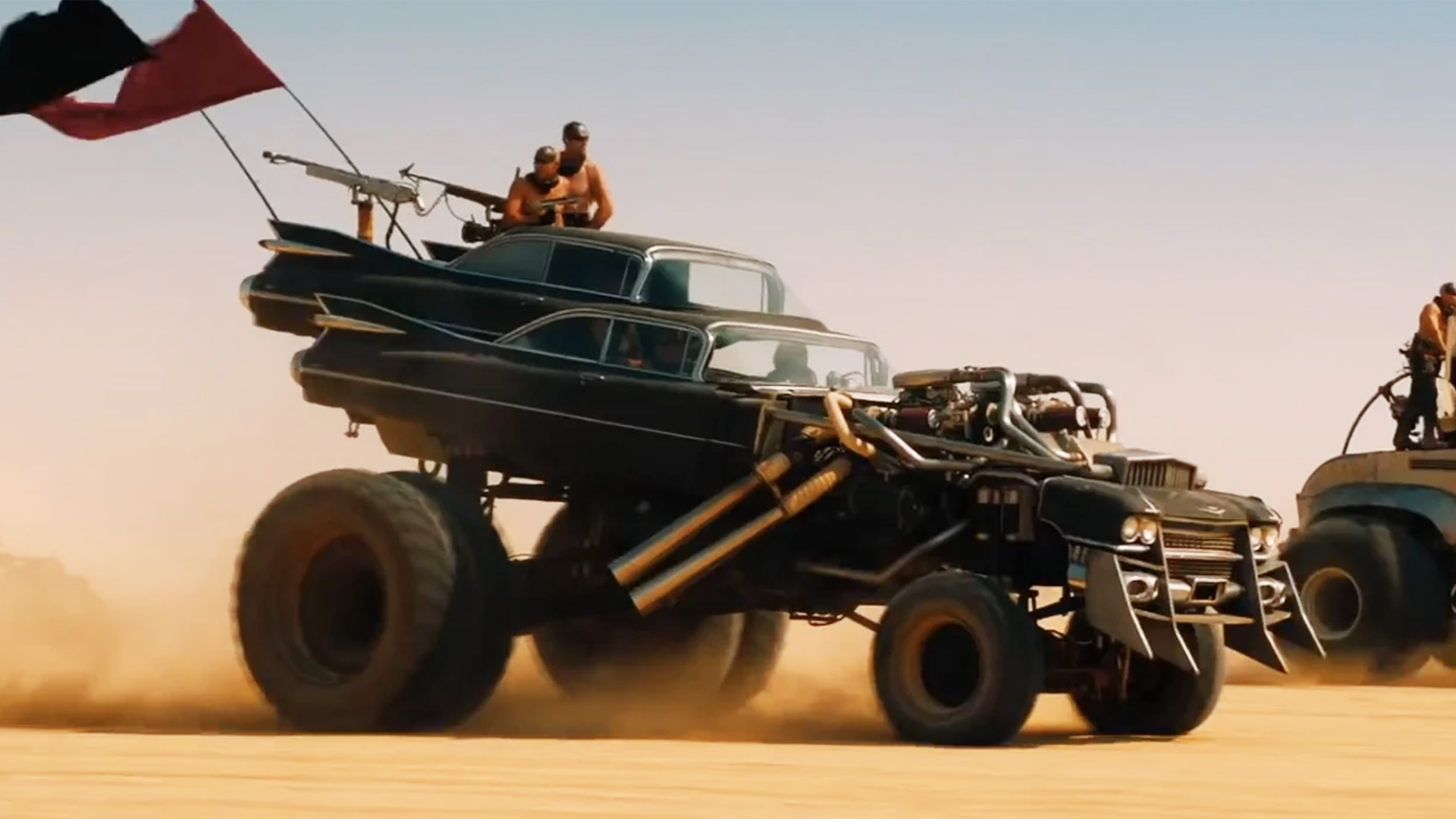

It’s well-known that director George Miller and the producers of 2015’s Mad Max: Fury Road went all out in constructing real, working post-apocalyptic vehicles for the movie. Every twisted car you see, from the War Rig semi to the double Caddy monster truck to the Dodge Charger tank, was actually built to spec as a functional machine—no CGI, no faking. But as you might expect, there’s a difference between “functional” and “reliable,” or “usable,” or “not a deathtrap.”
YouTube channel Mad Max Bible recently posted a video detailing how many of the cars in the film were about as sketchy as you’d expect for something that was supposedly cobbled together out of scavenged parts in a desert wasteland. Now, stunt cars used in film and television are usually basket cases. Vehicles are built to survive the duration of a film shoot, or in many cases just one stunt. But the combination of the highly unique rat rods needed here and the harsh filming environment meant that some members of the Fury Road fleet were truly glorious crapcans.

Turns out the Gigahorse, the dual Cadillac-bodied monster truck, was really powered by a functional 1,200-horsepower V16. The engine is two 502-cubic-inch Chevy V8s joined together with air shoved into them by two 8/71 superchargers, and channeling all that power to the wheels is an Allison truck transmission, which was swapped in during filming when it became apparent that the original, wholly-inadequate TH400 gearbox would need a rebuild after every shoot.
The only Hollywood trickery involved with the Gigahorse was the fake turbo set-up and its speed; this 10.5-ton Big-Daddy-Caddy could only do 60 miles per hour on a good day. Still, the gearbox adapter designed by Jacinta Leong used on the build is highly impressive.


Then you had vehicles like Cranky Frank, which lived up to its name in tormenting its stunt driver with laughably poor visibility. This Holden Ute started out as a father-son rat rod build that was drafted into the movie. It was built with a center driving position with a cut roofline that downsizes the windshield to a seven-inch gap.
It gets worse when you sit in and realize that the steering wheel is directly behind a massive GM 8V92 supercharger with truck exhaust tips for an injector hat. Not being able to see where you’re going unless you drive like Ace Ventura gets dangerous real quick when you’re inches away from other Mad Max death machines driving through a dust storm.
Unfortunately the video confirms that one of the coolest cars in the film, the Dodge Charger Peacemaker tank, was an absolute pile of garbage. The EV1 Ripsaw that was used for the tracked chassis arrived in Australia riddled with build mistakes like incomplete welds and inadequate cooling; though the production team got it working, it proved dangerous to operate and continued to suffer endless mechanical failures. It was apparently crushed at the end of filming and “ground into fist-sized chunks” to the delight of everyone.


Some of the cars featured in this video were so dangerous that they were not driven in the film or cut out completely. Mad Max Bible plans on releasing more videos on some of the other 100-odd vehicles built for Fury Road. If we can’t have a new Mad Max film just yet, this’ll be a decent way to tide us over.
Got a tip? Send us a note: tips@thedrive.com